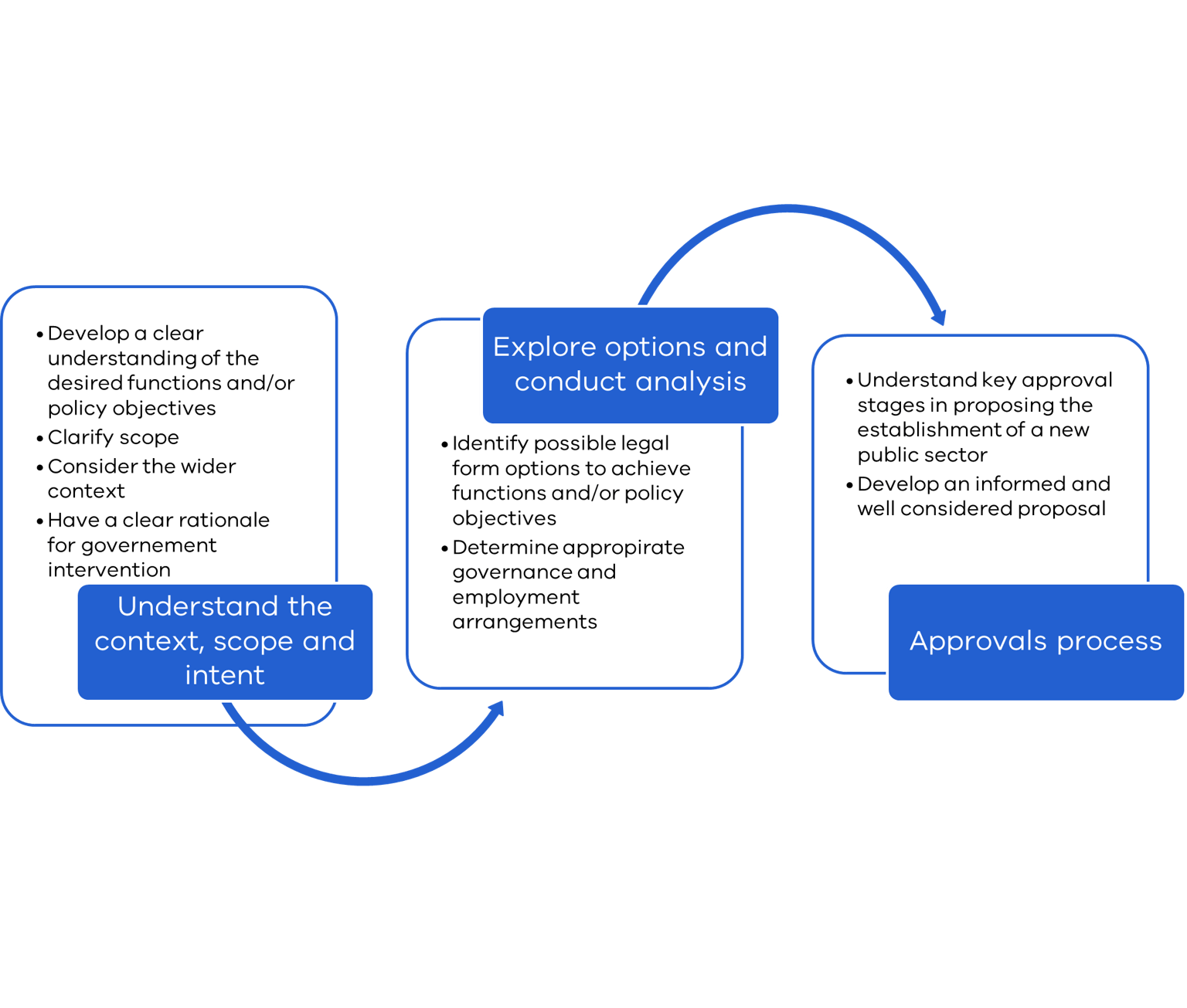- Published by:
- Department of Premier and Cabinet
- Date:
- 12 June 2025
About this guidance
The Victorian public sector performs a wide variety of functions, including:
- delivering services to the community
- providing policy advice
- managing public money
- regulation
- funding and contracting private and non-government organisations for service delivery.
These services are delivered through the public service (departments, administrative offices and the Victorian Public Sector Commission) and through public entities and special bodies operating in the wider public sector.
Adopting suitable legal forms and governance arrangements for the functions and activities being undertaken by public entities is critical for high quality performance.
The ‘legal form’ of a public entity refers to:
- the way it is created — whether this be through a legislative or a non-legislative process – for example:
- a statutory authority which is a public entity that is established by or under Victorian legislation
- a non-statutory body established by a minister or Governor in Council
- a corporation established under the Corporations Act 2001 (Cth) (Corporations Act)
- its status as an incorporated or unincorporated body.
Having well considered and fit for purpose forms and arrangements:
- provides a foundation for effective and efficient governance and management
- helps ensure that bodies are accountable, responsible and support public trust in government institutions.
In contrast, bodies with poor alignments between function, form and governance arrangements can:
- impede high performance
- create inefficiencies and costs
- diminish levels of public accountability and transparency.
Who the guidance is for
This guidance is designed to help department policy officers explore possible legal form options when establishing or seeking to change the form of non-departmental entities.
This guide will set out important things to think about when you’re designing a new entity, including:
- legal forms
- mechanisms for establishment
- functional implications
- governance and employment arrangements
- the financial management implications for the entity and the state
- how to establish, manage, review and dissolve public sector bodies.
How to use the guidance
This guidance is organised around three key steps policy officers should follow when designing or reviewing a public sector body.
Key terms
- Administrative office: a public service body established by the Governor in Council under section 11 of the Public Administration Act 2004 (PAA) in relation to a department.
- Non-departmental entity: administrative offices, public entities and special bodies. Does not include departments.
- Public sector body: a public service body, public entity, or special body.
- Public service body: a department, administrative office or the VPSC.
- Public entity: As defined under section 5(1) of the PAA, public entities undertake a public function or are owned by government. A public entity is established by an Act of Parliament, Governor in Council or a minister. In the case of a body corporate, at least one half of the directors are appointed by the Governor in Council or a minister.
- Special body: entities listed as special bodies under section 6 of the PAA, or declared to be special bodies by the Governor in Council.
- Statutory corporation: a body corporate established under legislation or a state body established under the State Owned Enterprises Act 1992.
For more definitions refer to Common terms and acronyms
Deciding to create a new non-departmental entity
Factors to consider before a new Victorian government entity is created
What type of body should be created?
Once you have decided to create a non-departmental entity, it is important to choose the right type of entity
Exploring public entity legal form options
It is important to choose a legal form for your public entity that allows it to exercise all its functions.
Public entity governance arrangements
Appropriate ministerial, board, employment and funding arrangements for public entities
Administrative Office (AO) governance arrangements
Administrative Offices are accountable both to the relevant minister and department.
Application of whole of Victorian government legislation and policies
Non-departmental entities have a range of obligations under whole of Victorian Government legislation and policies
Updated
